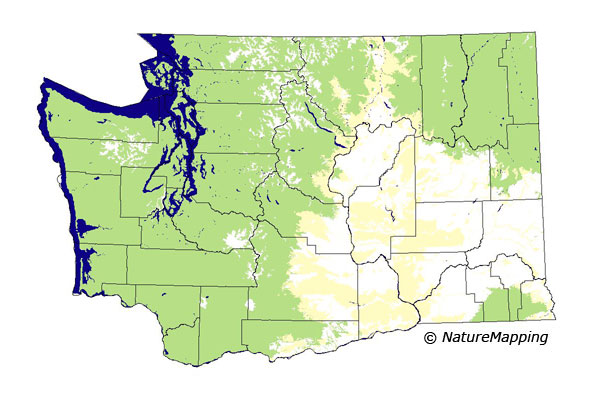GAP Analysis Predicted Distribution Map
Little Brown Myotis (Myotis lucifugus)
Species Code: MYLU
|
Legend:
 = Core Habitat = Core Habitat
 = Marginal Habitat = Marginal Habitat
Breeding Range Map
The green area shows the predicted habitats for breeding only. The habitats were
identified using 1991 satellite imagery, other datasets and experts throughout the state, as part of the Washington Gap Analysis
Project.
Click to enlarge distribution map
Map with historical museum records
|
Metadata
(Data about data or how the map was made)
The Little Brown Myotis is most common in forested zones. They forage among conifer and hardwood forest, among
scattered trees, along the edges of dense forest, along foothills and cliffs, in open areas, and over water. They
are usually along water courses in open range land where they rarely occur. They use human structures more readily
than any other bat and occur even in dense urban development. They are often seen foraging around lights, along streets,
and over city parks. Breeding females are probably restricted to low elevation, wet cool coniferous forests but non-breeding
females and males occur in cool, wet sub-alpine forest.
All forest zones were core and steppe was peripheral. All habitats were good in forested zones, except bare ground at higher
elevations. In steppe zones, all habitats were good except dryland agriculture and non-forested habitats.
Translated from the Washington Gap Analysis Mammal Volume by Dave Lester
Webpage designed by Dave Lester

 = Core Habitat
= Core Habitat = Marginal Habitat
= Marginal Habitat